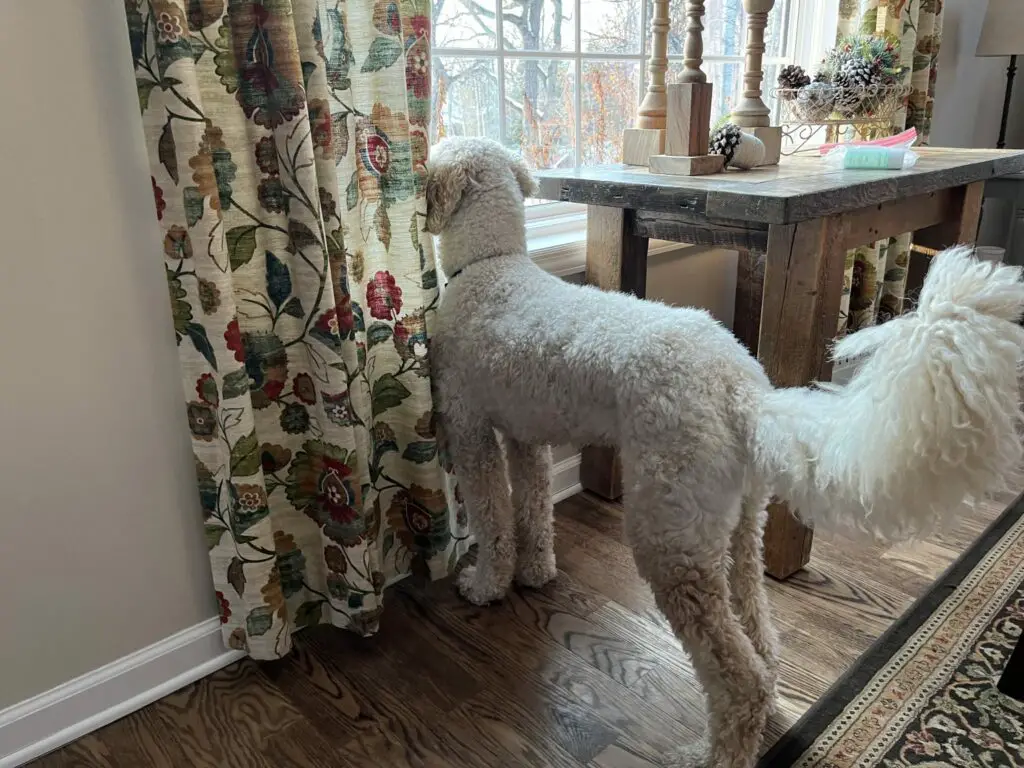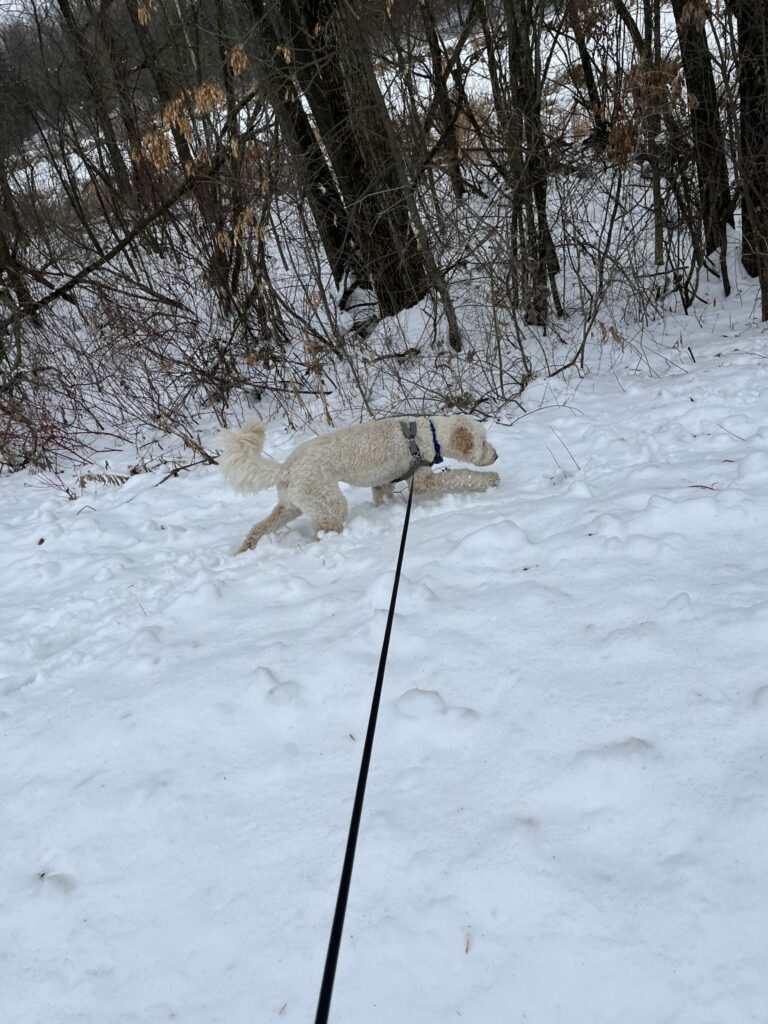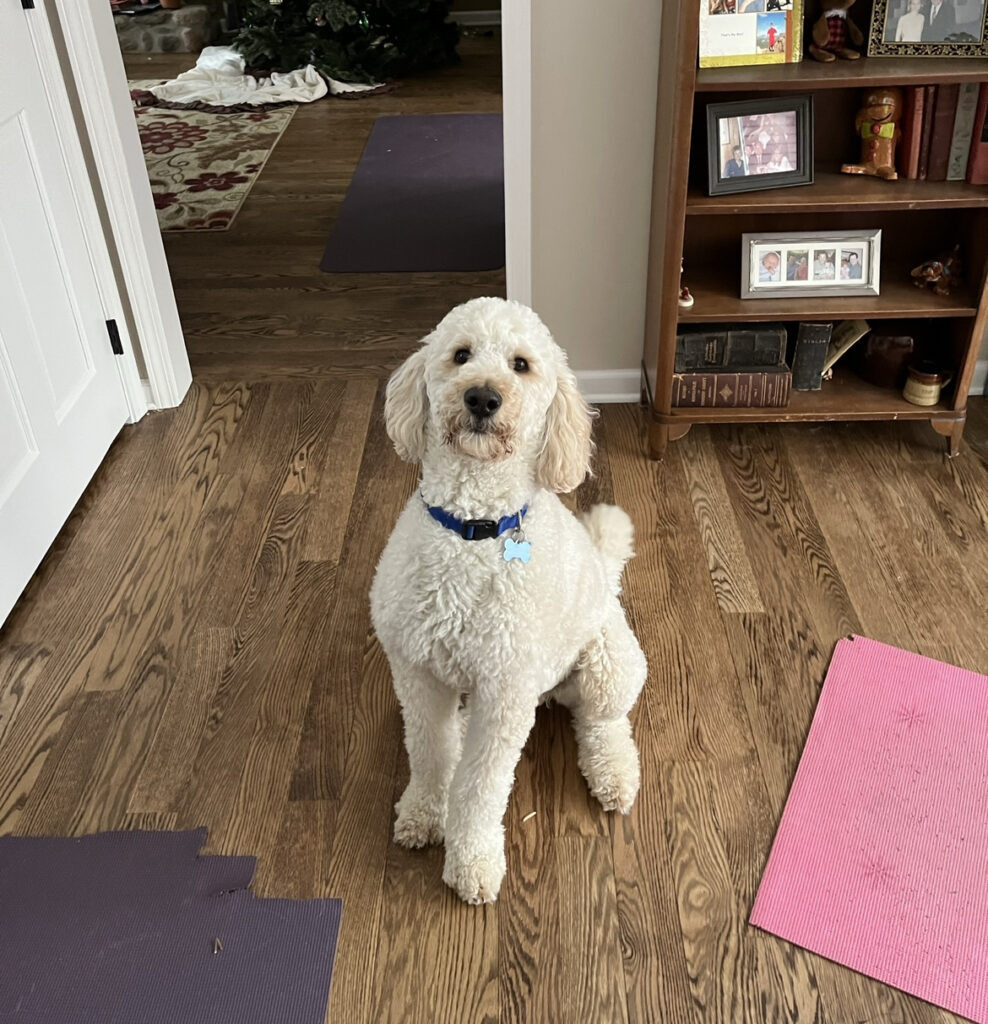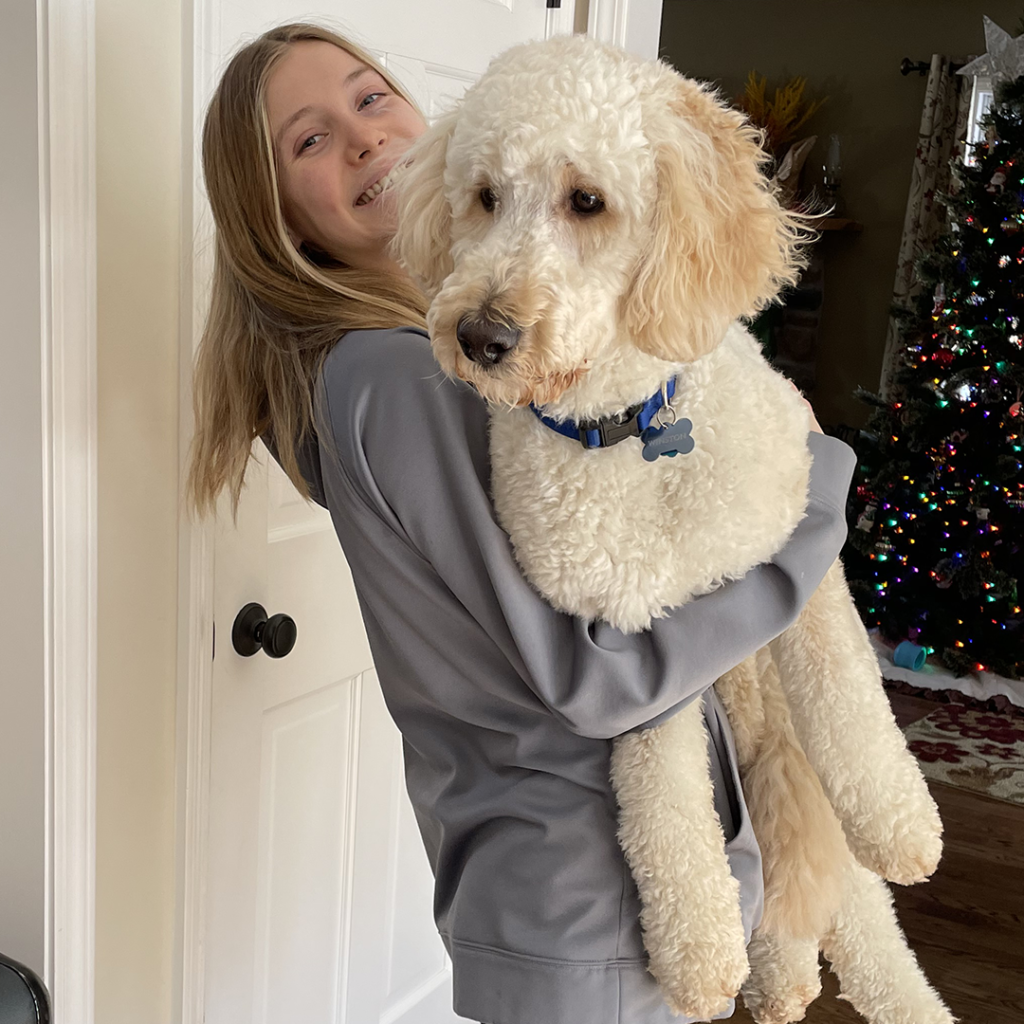Poodles are one of the most popular breeds of dogs, known for their intelligence, loyalty and distinctive curly coats. But did you know that Poodles have an incredible ability to “point” game? This unique behavior can be trained with time and patience and is a useful tool in both hunting and competitive sports. Discover how this amazing breed has been able to point its way into the hearts of many pet-owners!
Yes, poodles can point. Poodles were bred to be pointing dogs, and today they are still being used for that purpose in the sport of field trialing.
What is Pointing?

Pointing is a type of gun dog behavior that occurs when the animal senses game and stops, alertly pointing its nose towards the target. It is an instinctive action based on a strong genetic foundation for hunting, passed down from generation to generation.
Pointing helps hunters locate game more quickly and efficiently by utilizing their dogs’ heightened sense of smell and keen eyesight. The act of pointing involves the dog standing still with his front legs extended forward in an upright stance while placing his muzzle near or directly onto whatever he has detected.
In addition to being beneficial for hunting purposes, pointing can also be hugely advantageous in everyday life as it allows owners to keep their pooches under control off-leash without having them wander too far away.
It encourages obedience training as well as increases bond between human and pup! With proper practice and consistency, this skill can be taught to most breeds including poodles…so if you own one feel free to give it a try!
Do Poodles Have the Ability to Point?

Poodles have the potential to point, but whether or not they are able to do so depends on how their owners train them. Poodles are a highly intelligent breed of dog and can be taught a variety of tasks with patience and dedication. With proper training methods, poodles can learn pointing as part of hunting activities or other commands used in agility sports such as scent detection.
In order for poodles to point effectively, it is important that they receive consistent and positive reinforcement from their owners. It may take some time before your pup starts picking up the concept behind pointing, but once he does you will soon see him responding naturally when certain scents come into play.
To help your pup along in this process you should slowly introduce various items which have distinct smells like birds feathers or even dead animals as these may trigger his natural instinct to follow his nose and stop at whatever he smells first; its also a good idea to provide treats when he stops correctly after being given a command like “point” or “stop”.
Generally speaking, while poodles possess the potential ability to point it usually takes consistent training over an extended period of time for them to develop a reliable skill set in this area; nonetheless if you want your pup trained properly then investing both time and effort into teaching him how to point will definitely pay off in the end!
Breeds of Dogs with Natural Pointing Instincts
Dogs with natural pointing instincts are bred to instinctively point when they detect game, making them ideal hunting companions. These breeds include:
- German Shorthaired Pointers
- Vizslas
- English Setters
- Brittany Spaniels
- Wirehaired Pointing Griffons
- Weimaraners
- Cocker Spaniels
And of course, Poodles!
Training a Poodle for Pointing

Poodles have a very long history of being used as hunting dogs, and they are still quite capable of performing the same tasks that their ancestors did centuries ago. Training a poodle to point is not difficult or time consuming; however, it does require patience, consistency and commitment on the part of the trainer.
The first step in training your poodle for pointing is to ensure that it has been properly socialized with other animals and humans. It must also be comfortable around birds since you will be teaching him to recognize them when out in the field. Once your poodle is sociable enough, you can begin working on basic obedience commands such as sit, stay and come before progressing onto more advanced behaviors like retrieving objects or retrieving downed gamebirds (if allowed).
When teaching your poodle how to point at birds you should start by having him chase after a toy bird while giving verbal cues such as “find” or “seek” when he catches up to it.
When done correctly he should naturally freeze into an obedient stance with his nose pointed towards the direction of where he found the bird – this is referred to as “pointing”. Reward positive behavior each time he performs successfully so that over time he associates pleasing actions with reward-based activities. As you progress through training sessions continue adding more elements such as distance commands so that eventually your dog can accurately find gamebirds from farther away distances without prompting from its trainer.
With proper care and dedication any breed of dog can learn how to do most anything; Poodles included! With enough practice even these small pooches can become excellent hunters who know exactly what their purpose is: To find those feathered critters!
Benefits of Teaching a Poodle to Point
Teaching a poodle to point can be an incredibly rewarding experience for both the dog and its owner. Pointing is a natural behavior in most bird-hunting breeds, but it can also be taught to other breeds as well – including poodles. Teaching your poodle this skill provides numerous benefits that make it worth the effort invested in training.
One of the primary benefits of teaching a poodle to point is that it gives them something fun and mentally stimulating to do with their time and energy.
Not only does pointing provide physical exercise, but it also gives dogs an important job to do, making them feel more secure and content overall. It’s also a great way for dogs to explore their environment while at the same time learning how to control impulses such as chasing after small animals or digging holes.
Another benefit of teaching your poodle to point is that it encourages bonding between you and your pet; since pointing requires patience and trust on both sides, working together towards this shared goal strengthens the bond between you two even further.
Furthermore, having a dog who knows how to properly hunt makes hunting trips much more enjoyable; instead of chasing after birds all day long, owners will have peace of mind knowing they have companion who understands what they’re trying accomplish while out in nature together – providing joyous moments along the way!
Gear and Equipment Needed for Training
A variety of items should be included in your toolbox, including a sturdy collar, leash, toy rewards, a clicker or other reward system device, treats and high value food rewards.
Properly fitting collars are essential for safety reasons as well as providing tactile feedback to the dog during commands.
Leashes provide another layer of control that can make training easier.
Toys are important for engaging the pup’s interest in learning new behaviors; having two different types (such as a ball versus tug rope) may help motivate the pup by changing up the rewards offered on each session.
Clickers conveniently mark desired behavior with an audible sound instead of having to give verbal praise immediately after each action; this makes it easier to teach complex behaviors like pointing at scent articles or targeting specific locations on command from afar.
Treats should be small and easy to swallow so they can quickly get back into position without being distracted by chewing food; high-value foods such as chicken jerky strips will often result in better performance once the dog understands what you expect them to do during their lesson sessions!
Tips for Successful Poodle Pointing Training
Poodle Pointing Training is a great way to teach your pup the basics of obedience. Here are a few tips for successful Poodle Pointing Training:
1. Start with basic commands such as “sit” and “down” before introducing pointing behaviors. This will help your pup understand what you expect them to do when they point their nose at something or someone.
2. Use positive reinforcement such as treats, praise, and affection to encourage good behavior from your pup during training sessions. Rewarding desired behaviors will make it easier for them to learn more complex tasks later on in their training journey.
3. Make sure that you stay consistent with the rules and rewards throughout the entire process—this helps create reliable results in learning new skills and commands faster!
4. Be patient with your poodle! Teaching any dog takes time, so don’t be discouraged if they aren’t picking up on things quickly enough—just keep reinforcing positive behavior whenever possible and practice patience while doing so!
5. Finally, have fun while training! Spending quality time bonding with your pup through various activities can help create an enjoyable experience that both parties benefit from immensely!

